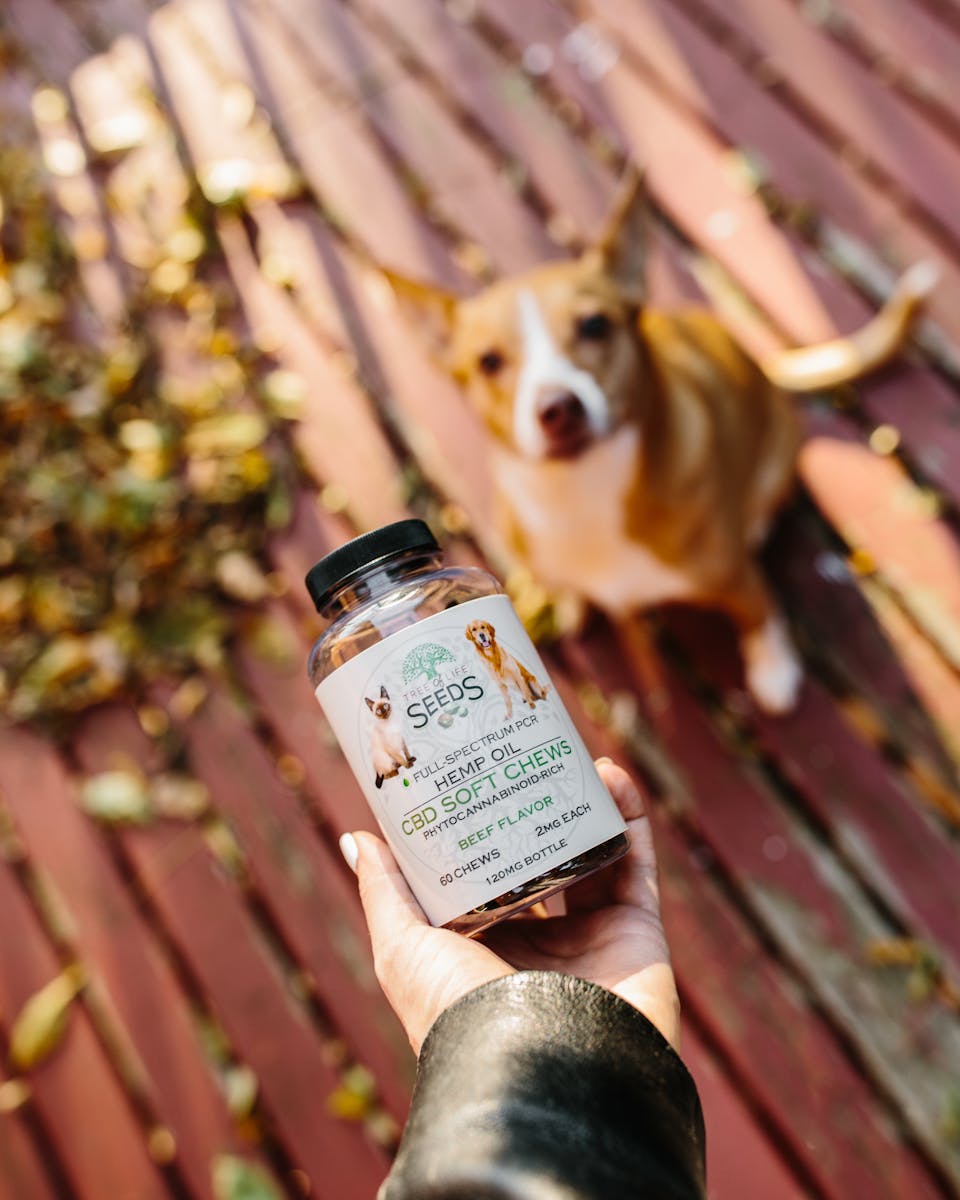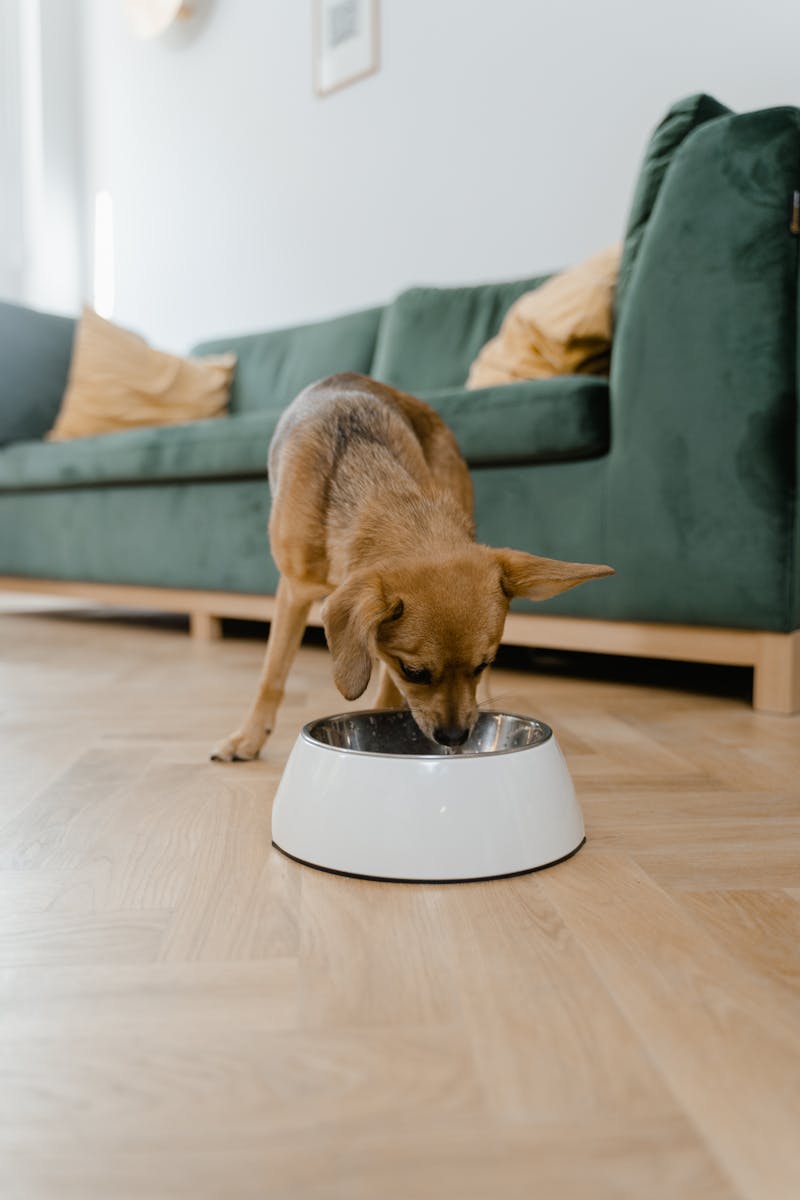Addressing Separation Anxiety in Pets: Strategies for Success
Understanding Separation Anxiety in Pets: A Comprehensive Overview
Separation anxiety is a common behavioral condition affecting both dogs and cats, characterized by an intense fear or distress exhibited when they are separated from their owners or caregivers. As pet owners, we cherish the bond we share with our furry companions, but understanding their emotions is crucial in ensuring their well-being.
Symptoms of separation anxiety can manifest in various forms, and it’s essential to recognize them early. Dogs may vocalize excessively, engage in destructive behaviors, have accidents indoors, or display signs of pacing and chewing. On the other hand, cats, while often more independent, can also suffer from separation anxiety, showing signs like constant meowing, over-grooming, or hiding. Recognizing these behaviors can help pet owners detect the condition before it escalates.
The prevalence of separation anxiety is more common than many realize. Research indicates that approximately 20-40% of dogs exhibit signs of this distress, while cats can also experience anxiety, particularly in multi-pet households or when facing significant changes in their environment. Factors such as age, breed, and previous trauma can contribute to the likelihood of developing separation anxiety.
In this blog post, we will explore the symptoms, causes, and effective management strategies for separation anxiety, helping pet owners create a comforting environment for their anxious companions. By understanding what separation anxiety is, you can take the first steps in ensuring your pet feels secure when you’re not home. Stay tuned as we delve deeper into this important topic.
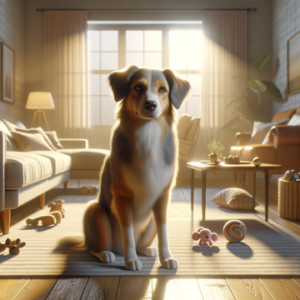
Understanding the Causes of Separation Anxiety
Several factors can contribute to the onset of separation anxiety in pets, and understanding these causes is vital for effective management. Here are some common reasons:
- Changes in Environment: Pets are creatures of habit and thrive on routine. A sudden change in their environment—such as moving to a new home, rearranging furniture, or introducing new family members (including the furry kind)—can disrupt their sense of security. These changes can be overwhelming for pets, leading to anxiety when they are left alone.
- Loss of an Owner: The death or absence of a beloved owner can trigger separation anxiety in pets. When a pet loses a primary caregiver, they may feel a profound sense of loss and become distressed when alone, associating solitude with their owner’s absence. This emotional shift often leads to heightened anxiety levels.
- Lack of Socialization: Pets that have not been adequately socialized during their formative years may struggle with separation anxiety. Dogs and cats that are not used to being left alone or exposed to different environments and people tend to become more anxious in unfamiliar situations. Training them to encounter new experiences gradually can help reduce this anxiety.
- Genetics and Breed: Some breeds are more predisposed to anxiety than others. For instance, herding breeds like Border Collies often develop a strong attachment to their owners and may exhibit signs of distress when left alone. Genetic predisposition can play a significant role in a pet’s likelihood of developing separation anxiety.
By identifying the underlying causes of separation anxiety, pet owners can tailor their strategies to address their specific situation effectively. Understanding these factors not only fosters greater empathy for our pets’ experiences but also equips us with the tools necessary to alleviate their distress.

Recognizing the Signs of Separation Anxiety
Understanding the specific behavioral signs of separation anxiety in pets is vital for effective intervention. Here are some of the most common indicators to look out for:
- Excessive Barking or Vocalization
Many dogs experiencing separation anxiety may exhibit excessive barking, howling, or whining when left alone. This vocalization is a plea for attention and can signal their distress. If your dog barks consistently throughout the day or during short absences, it might be a clear indication of anxiety. - Destructive Behavior
Dogs suffering from separation anxiety can resort to destructive actions as a way to cope with their distress. This might include chewing furniture, scratching doors, or tearing apart household items. Such behavior is often more significant than typical playful antics and arises specifically in response to being alone, causing damage in the process. - Inappropriate Elimination
One of the most alarming signs of separation anxiety is inappropriate elimination, which occurs when pets relieve themselves indoors out of fear and stress rather than a lack of training. This can include urinating or defecating in locations they typically avoid. It’s essential to differentiate this behavior from regular indoor accidents, as it is often linked to anxiety rather than a behavioral issue. - Pacing and Restlessness
Animals with separation anxiety often exhibit pacing or restlessness. They may walk in circles or move back and forth, displaying an inability to settle down when left alone. This behavior is a physical manifestation of their anxiety, illustrating their distress over separation from their owners. - Hiding or Clinginess
Pets may either seek refuge in confined spaces like closets or under beds or display clinginess by following their owners everywhere in anticipation of their departure. This behavior indicates their discomfort with being alone and signifies a strong attachment to their caregivers.
By recognizing these signs of separation anxiety, pet owners can take proactive steps to provide their furry friends with the support they need. Early intervention can make a world of difference in managing these behaviors and improving your pet’s quality of life.

Importance of Early Intervention: The Need for Timely Action Against Separation Anxiety
Addressing separation anxiety early is crucial for the welfare of both pets and their owners. Failing to recognize and manage this common condition in its initial stages can lead to long-term behavioral issues that are more difficult and costly to correct down the line.
Prevention is Key
Early intervention plays a significant role in preventing separation anxiety from escalating into severe behavioral problems. By implementing effective strategies at the first signs of distress, pet owners can help their companions develop coping mechanisms that foster resilience. This proactive approach ensures that pets do not learn to associate their owner’s absence with fear or insecurity, thereby promoting a positive emotional state.
Minimizing Impact on Daily Life
Separation anxiety can disrupt not just the life of the pet but also the owner’s daily routine. For example, a dog with severe anxiety may bark incessantly, leading to complaints from neighbors, while a cat may scratch furniture or over-groom, creating additional stress for the owner. Early intervention can help mitigate these behaviors, leading to a harmonious household.
Emotional Well-Being for Owners and Pets
The bond between pet and owner is deeply emotional, and witnessing a beloved animal struggle with anxiety can be devastating. The repercussions of untreated separation anxiety can strain this relationship, resulting in emotional distress for both parties. By addressing these issues early on, owners can foster a more secure and trusting environment, enhancing the quality of life for everyone involved.
In summary, early intervention is paramount in managing separation anxiety effectively. Recognizing symptoms early, employing preventive strategies, and fostering a comfortable environment can make all the difference in securing the emotional welfare of both pets and their owners. By taking action now, you set the foundation for a happier and healthier future for your furry friend.

Creating a Safe Space for Your Pets: Tips to Alleviate Anxiety During Departures
Creating a comfortable environment for your pets can significantly reduce their anxiety when faced with separations. A safe space not only promotes relaxation but also helps your furry friends feel more secure in your absence. Here are some practical tips pet owners can implement to craft an inviting atmosphere for their pets.
1. Designate a Cozy Retreat
Choosing a designated area for your pet to retreat to when they feel anxious is crucial. This can be a specific room or a particular corner in your home adorned with their bed, favorite blankets, and toys. Make sure this space is quiet, away from household noise, and free from disruptions. A simple dog bed or a cozy cat cave can transform a space into a sanctuary, instilling a sense of safety in your pet.
2. Use Calming Products
There are numerous products available that can help soothe distressed pets. Consider using:
- Calming collars: Infused with pheromones to create a sense of calm.
- Anxiety wraps: These provide gentle pressure, much like swaddling an infant.
- Diffusers or sprays: These release calming scents, such as lavender, that can help reduce anxiety.
Always observe how your pet responds to these products, as different techniques work better for different animals.
3. Keep Them Occupied
Boredom can amplify feelings of anxiety, so providing mental stimulation is essential. Interactive toys, puzzle feeders, or treat-dispensing toys can engage your pet’s mind and keep them busy during your absence. Cats enjoys toys that mimic prey, while dogs often appreciate chew toys that they can work on. This not only diverts their attention but also tires them out, making them more inclined to relax.
4. Establish a Departure Routine
Routines create a sense of predictability, which is vital for anxious pets. Consider developing a consistent goodbye ritual that signals to your pet it’s time to relax. This could include a special treat, a certain type of playtime, or a brief cuddle session before you leave. By maintaining this same routine every time, your pet can learn that your departures are a normal part of their day, reducing their anxiety over time.
5. Gradual Desensitization
If your pet struggles with severe anxiety, consider gradually desensitizing them to your departures. Start by leaving them alone for short periods and incrementally lengthening these separations. Reward your pet with treats or praise when they remain calm, reinforcing positive behaviors. This technique teaches them that being alone isn’t as dreadful as they might believe.
By implementing these strategies, you can help create a secure and comforting environment for your pet during times of separation. Remember, it may take time for your furry companion to adjust, but with patience and perseverance, you can make a significant difference in their ability to cope.

Gradual Desensitization Techniques: Helping Pets Adjust to Separation
Gradual desensitization is an effective behavioral technique used to help pets cope with separation anxiety. This method involves exposing pets to the situation that causes them anxiety in a controlled, incremental manner, allowing them to adjust to their owner’s absence more comfortably. By systematically introducing short periods of separation and gradually increasing the duration, pet owners can help alleviate their furry friends’ distress.
Step 1: Create a Safe Space
Before starting the desensitization process, establish a safe and comfortable environment where your pet can feel secure during short absences. This can be a designated room with their favorite toys, bedding, and access to food and water. Additionally, consider using a calming aid, such as an anxiety wrap or pheromone diffuser, to help soothe your pet.
Step 2: Short Departures
Start the desensitization process with short and non-threatening departures. Leave your pet in their safe space and exit your home for just a few minutes—no more than 5-10 minutes. Make sure to remain calm and composed during these departures, as your energy will influence your pet’s feelings. When you return, avoid dramatic greetings that may inadvertently reinforce anxiety.
Step 3: Gradually Increase Duration
Once your pet becomes accustomed to your short separations, gradually increase the time spent apart. Aim to extend your absences by just a few minutes each time, allowing your pet to process the changes without overwhelming them. Regular practice will build their confidence and help them recognize that your return is predictable and routine.
Step 4: Incorporate Positive Reinforcement
During the gradual desensitization process, positive reinforcement is critical. Reward your pet with treats, praise, or affection during and after each successful separation. This association between your absence and positive experiences will further reduce their anxiety over time.
Step 5: Monitor Progress and Adjust
Throughout the desensitization journey, keep a close eye on your pet’s behavior. If they seem significantly distressed or unable to handle the duration of separation, consider stepping back to a shorter time frame before gradually increasing again. Patience and consistency are key throughout this process.
By implementing gradual desensitization techniques, pet owners can provide significant help to their furry companions dealing with separation anxiety. Over time, these incremental steps lead to healthier coping mechanisms, allowing pets to adjust more comfortably to their owner’s absence. Consistent practice and gentle guidance can create a lasting positive impact on your pet’s overall well-being.
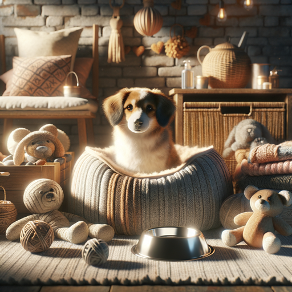
The Role of Comfort Objects in Alleviating Separation Anxiety
One effective strategy for easing separation anxiety in pets is the use of comfort objects, such as toys, blankets, or items infused with the owner’s scent. These comfort items can provide a sense of security and familiarity, making pets feel more at ease when they’re left alone.
How Comfort Objects Work
Comfort objects serve as tangible representations of safety and connection. An item like a cozy blanket or a favorite plush toy can help an anxious pet resettle when their owner is away. For instance, an item with the owner’s scent—such as a shirt or a well-loved toy—can evoke feelings of comfort and remind the pet that they are not entirely alone. According to a study published by the Journal of Veterinary Behavior, items soaked in the owner’s scent significantly reduced anxiety levels in dogs when left alone.
Tips for Choosing the Right Comfort Item
Selecting an effective comfort object involves a few simple considerations:
- Familiarity: Choose an item your pet already has positive associations with.
- Safety: Ensure that the comfort item is durable and non-toxic.
- Scented Materials: Employ items that can be infused with your scent, like an old t-shirt or a piece of your bedding.
- Positioning: Place the comfort object in a designated safe space where your pet feels secure.
Real-World Example of Comfort Objects in Use
Many pet owners have shared success stories of using comfort objects to assist their anxious pets. For instance, a dog owner noted that their golden retriever calmed down significantly when left with a special blanket that carried their scent. Similarly, a cat owner found that placing a toy mouse near their feline helped alleviate ongoing meowing and restlessness.
Conclusion
By integrating comfort objects into the daily routine of anxious pets, owners can facilitate a smoother separation experience. This simple strategy not only enhances a pet’s sense of security but also strengthens the bond between pet and owner.

Establishing a Routine: A Key to Reducing Anxiety in Pets
Creating a consistent routine for your pet can be a game-changer in managing separation anxiety. Just like humans thrive on structure, our furry friends benefit greatly when their days follow a predictable pattern. Routine offers a sense of security, allowing pets to know what to expect and alleviating feelings of uncertainty that can lead to anxiety.
The Benefits of a Consistent Daily Schedule
- Predictability Reduces Stress: A well-structured day helps pets understand when to expect feeding, walking, and playtime. This predictability can reduce panic when you leave the house, as your pets will grow accustomed to the idea that you will return after specific activities.
- Enhanced Training Opportunities: Regular routines provide more opportunities for training and reinforcement. Incorporating short training sessions into the daily schedule can help build confidence in your pet, making them feel more secure overall.
- Balanced Energy Levels: Dogs and cats alike require mental and physical stimulation. A structured routine allows for regular exercise, play, and enrichment activities which are essential for a balanced temperament. This helps mitigate the excess energy that can contribute to anxiety and destructive behaviors.
Tips for Establishing a Routine
- Schedule Feeding Times: Feed your pet at the same times each day to help regulate their digestion and confidence.
- Designate Walk and Play Times: Aim for consistent times for walks and play, which helps them anticipate activities and reduces anxiety.
- Create a Pre-Departure Ritual: Develop a specific routine you follow before leaving home. This could include a short play session or a special treat, signaling to your pet that you will be back soon.
Real-World Example
Consider the harrowing journey of Max, a Golden Retriever who exhibited severe separation anxiety. His owner implemented a structured routine that included morning and evening walks, scheduled play sessions, and consistent feeding times. Over a few weeks, Max began to feel more secure, displaying fewer signs of anxiety when left alone. This transformation highlighted the critical role that routine can play in promoting a calm and happy state of mind for anxious pets.
By establishing and maintaining a consistent routine, you can create a stable and reassuring environment for your pet, helping them feel more secure when they are left alone.

Training Commands: Building Confidence and Reducing Anxiety in Pets
Command training plays a pivotal role in fostering confidence in pets and addressing issues like separation anxiety. Commands such as “stay” and “leave it” not only enhance safety but also provide mental structure to an animal’s environment. When pets learn to respond to these commands, they experience a sense of accomplishment and security, which can significantly reduce anxiety levels.
The Importance of Command Training
Implementing command training is not just about obedience but also about enhancing the mental well-being of your pet. Learning commands builds their confidence, as they gain a clearer understanding of acceptable behaviors and boundaries. For pets struggling with separation anxiety, this can create a more stable mental environment, alleviating some of their stress when left alone.
For example, teaching your dog to “stay” can instill a sense of calm during uncertain times. It provides them with a focal point, allowing them to trust their surroundings even when you’re not present. Similarly, the “leave it” command can prevent pets from engaging in destructive behaviors or encountering hazardous situations, reducing potential stressors that may contribute to anxiety.
Methods for Training Basic Commands
Training commands effectively can be accomplished using positive reinforcement techniques. Here are some actionable tips to get you started on training your pet:
- Choose the Right Environment:
- Begin training in a quiet space free from distractions. This helps your pet focus on learning new commands without interruptions.
- Use Treats as Rewards:
- Select high-value treats that your pet loves. Every time they successfully perform a command, reward them immediately. This creates a positive association with the behavior.
- Short, Consistent Sessions:
- Keep training sessions short—about 5-10 minutes—or until your pet shows signs of fatigue. Frequent, consistent practice helps reinforce learning over time.
- Patience and Persistence:
- Understand that every pet learns at their own pace. If your pet struggles with a command, go back a step and reinforce basic commands they already know before moving forward.
- Gradual Increase of Difficulty:
- Once your pet masters a command in a controlled environment, gradually introduce more distractions, or increase the distance between you and your pet while practicing commands.
- Incorporate Training into Daily Life:
- Use commands during everyday activities to reinforce their importance. For example, ask your dog to “stay” before putting down their food bowl or “leave it” when they approach something they shouldn’t.
Real-World Examples
Numerous pet owners have found success through command training to minimize anxiety in their pets. For instance, one dog owner reported that after consistently practicing the “stay” command, her dog was far less anxious during her absences. The structured routine helped the dog feel more secure, ultimately leading to lesser anxiety-related behaviors upon her departure.
In another case, a cat owner found that teaching her cat the “leave it” command significantly reduced episodes of her cat bringing unwanted items into her living space. By redirecting the cat’s focus away from potentially distressing situations, she was able to create a calmer atmosphere at home.
Incorporating command training into your pet’s routine not only bolsters their confidence but also serves as a valuable tool for mitigating separation anxiety, paving the way for a happier, healthier life for both you and your pet.

Utilizing Positive Reinforcement Strategies
One of the most effective methods to combat separation anxiety in pets is through positive reinforcement strategies that reward desired behaviors. By focusing on reinforcing good behavior rather than punishing unfavorable actions, pet owners can help their companions feel more secure and reduce anxiety over time.
Understanding Positive Reinforcement
Positive reinforcement involves providing a reward when the desired behavior occurs. This could include treats, praise, or toys—essentially anything that your pet values. The goal is to create associations between being calm and receiving rewards, which can help alleviate anxiety.
Gradual Desensitization
A crucial aspect of positive reinforcement is gradual desensitization. This technique involves slowly acclimating your pet to being alone in short intervals. Start by leaving your pet alone for a few minutes, then gradually increase the time apart. Each time you return, reward your pet for remaining calm, using treats or enthusiastic praise. This process can help them recognize that your departures do not always lead to negative outcomes.
Implementing Consistency
Consistency is key in establishing positive reinforcement as an effective strategy. Always reward your pet immediately after they exhibit the desired behavior. For example, when practicing leaving your pet alone, be sure to reward them for being quiet or relaxed during your absence. This builds a strong connection between their calmness and the rewards they receive, making them more likely to repeat the behavior in the future.
Real-World Example
Consider a dog that barks excessively when left alone. Instead of solely scolding the dog for this behavior, combine training with positive reinforcement techniques. Each time your dog responds calmly while you leave, offer a small treat or affectionate petting upon your return. With persistence, your dog will begin to associate your departures with positive experiences rather than fear, gradually reducing anxiety levels.
Employing positive reinforcement strategies not only helps in addressing separation anxiety but also strengthens your bond with your pet. By actively engaging in their emotional needs, you can create a comforting atmosphere that promotes confidence and tranquility.

Engaging Activities and Games to Alleviate Separation Anxiety
One effective approach to managing separation anxiety in pets is by introducing interactive games and activities designed to distract them and keep them occupied during alone time. Engaging your pet in stimulating tasks can reduce their focus on your absence and channel their energy positively. Here are some interactive games and activities to consider:
1. Puzzle Toys
Puzzle toys are excellent for keeping your pet mentally stimulated. These toys require your pet to figure out how to access treats hidden inside, encouraging problem-solving skills. Brands like Outward Hound and PetSafe offer a variety of options that cater to different difficulty levels, ensuring that your pet stays engaged and challenged.
2. Hide and Seek
This classic game isn’t just for humans! You can play hide and seek with your dog indoors to promote bonding while also serving as a distraction from anxiety. Start by asking your pet to stay in one room while you hide in another. Call your pet to find you; the thrill of the chase can alleviate anxiety and encourage physical activity.
3. Interactive Feeders
Replace regular bowls with interactive feeders that require your pet to work for their food. These feeders can provide slow feeding options for dogs or cats, turning mealtime into a fun activity. Interactive feeders help stimulate your pet mentally while reducing boredom and promoting healthier eating habits.
4. DIY Treat Scavenger Hunts
Hide treats around your home for your pet to find. This encourages exploration and engages their natural sniffing instincts. Start with easy-to-find spots and gradually increase the difficulty as your pet gets accustomed to the game. This will not only provide mental stimulation but also keep them busy during your absence.
5. Training Sessions
Incorporating short training sessions into your pet’s routine can significantly alleviate anxiety. Teaching them new tricks or reinforcing existing ones serves dual purposes: it reinforces your bond and keeps their minds active. Use positive reinforcement techniques and provide plenty of praise to motivate them during these sessions.
By implementing these interactive games and activities, pet owners can reduce symptoms of separation anxiety and create an enriching environment for their companions. These engaging tasks not only keep pets occupied but also help establish a sense of routine, making alone time more manageable for both them and their owners.
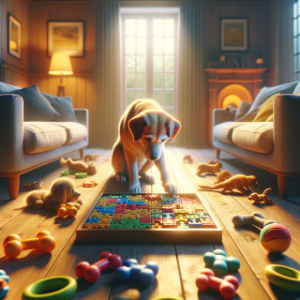
The Role of Mobile Pet Cameras in Alleviating Pet Anxiety
In the realm of modern technology, mobile pet cameras have emerged as a valuable tool for pet owners grappling with the challenges of separation anxiety. These innovative devices offer an easy way to check in on your furry friends while you’re away, providing peace of mind for both pets and their owners.
Keeping an Eye on Your Furry Companion
With mobile pet cameras, owners can monitor their pets in real-time through their smartphones, allowing them to observe their behavior and ensure they are safe and comfortable. Many of these cameras come equipped with features like two-way audio, so you can talk to your pets, reassuring them with your voice even when you’re not home. This connection can significantly help reduce their feelings of loneliness and anxiety while you’re away.
Reducing Anxiety for Pets and Owners Alike
The benefits of using mobile pet cameras extend beyond just surveillance. By checking in on your pets regularly, you can alleviate your concerns, knowing they are doing well while you’re away. This reduction in anxiety on the owner’s end can, in turn, have a positive effect on the pet’s behavior. When owners are less stressed, it often translates to a calmer and more secure environment for their furry companions.
Actionable Tips for Using Pet Cameras
To make the most of your mobile pet camera:
- Choose a Reliable Model: Opt for cameras with high-quality video and audio capabilities, night vision, and reliable connectivity.
- Set a Routine: Use the camera regularly to establish a routine for your pet. Checking in at the same times can help your pet adjust to your absence.
- Engage with Your Pet: Use two-way audio features to talk to your pet, offering them comfort and helping them feel connected to you.
- Monitor Behavior: Observe your pet’s behavior during your absence. If you notice signs of distress, it may be time to consider additional management strategies for their anxiety.
By integrating mobile pet cameras into your routine, you can foster a supportive environment that helps mitigate the symptoms of separation anxiety for your beloved pets.

When to Seek Professional Help for Pets with Severe Separation Anxiety
While many pets exhibit mild symptoms of separation anxiety that can often be managed with behavioral strategies and training, some cases require professional intervention. It’s important for pet owners to recognize the signs that indicate it’s time to consult with a veterinarian or a certified animal behaviorist.
Identifying Severity of Symptoms
If your pet displays extreme behaviors such as persistent and destructive chewing, excessive barking or vocalization, or self-harm (e.g., paw injuries caused by chewing), these are red flags that professional help is needed. Severe symptoms can lead to potential health issues and indicate that the anxiety may be deeply ingrained or exacerbated by other factors.
Timing is Everything
Seeking professional help is especially essential if you notice that your pet’s anxiety worsens over time or does not respond to basic training techniques. The sooner you address these issues, the better chance you have to improve your pet’s quality of life. Keeping a record of your pet’s behavior patterns can be very helpful when consulting with a professional.
Explore Treatment Options
Professional help can offer a range of treatment options, from behavior modification techniques to medication that can help manage anxiety. A vet can also rule out any underlying medical conditions that might be exacerbating your pet’s anxiety symptoms. Certified behaviorists specialize in anxiety disorders and can provide tailored strategies to help ease your pet’s distress.
Recognizing when to seek professional help for separation anxiety is critical for your pet’s well-being. If you’re concerned about your furry friend’s mental health, don’t hesitate to reach out to a qualified professional. It’s a proactive step toward ensuring that your beloved pet feels safe and secure, even when you are not at home.
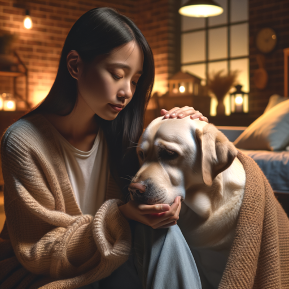
Medication Options for Managing Severe Separation Anxiety in Pets
When behavioral interventions alone are insufficient to alleviate severe separation anxiety, medication can be a viable option to support the emotional health of pets. It’s crucial to partner with a veterinarian to determine the best course of action tailored to your pet’s unique needs. Several classes of medications are commonly prescribed, each working differently to manage anxiety symptoms.
1. Antidepressants
Selective serotonin reuptake inhibitors (SSRIs) and tricyclic antidepressants are often prescribed for managing separation anxiety. Fluoxetine (Prozac) and Sertraline (Zoloft) are popular SSRIs, whereas Clomipramine (Clomicalm) is a tricyclic antidepressant. These medications help increase serotonin levels in the brain, which can enhance mood and reduce anxiety.
2. Benzodiazepines
For short-term relief during particularly stressful events, benzodiazepines may be used. Diazepam (Valium) and Alprazolam (Xanax) are examples that act quickly, providing immediate anxiety relief. However, they are generally not recommended for long-term use due to potential dependency issues.
3. Pheromone Products
Though not medications in the traditional sense, pheromone-based treatments such as Adaptil (for dogs) and Feliway (for cats) can signal a calming effect, reducing anxiety when you’re away. These products can be used in conjunction with other medications to provide a more comprehensive treatment plan.
4. Natural Supplements
In addition to pharmaceuticals, many pet owners explore natural remedies like L-theanine or Chamomile for their mild sedative properties. These supplements can sometimes be effective in reducing anxiety without the side effects of prescription medications.
It’s essential to consult with a veterinarian to assess your pet’s condition and determine the safest and most effective medication strategy. By combining medication with behavioral modification techniques, pet owners can create a comprehensive approach to managing severe separation anxiety, promoting an overall sense of security for their beloved companions.

Long-term Management Strategies for Overcoming Separation Anxiety in Pets
Managing separation anxiety in pets requires a proactive and thoughtful approach to create a nurturing environment that supports their emotional well-being. Here are several long-term strategies to ensure your furry friends feel secure and supported when left alone.
Build a Strong Foundation of Training
Consistent training is vital in managing separation anxiety. Teaching your pet commands like “sit,” “stay,” and “down” can instill a sense of discipline and predictability. Gradually desensitize your pet to being alone by leaving them for short periods and slowly increasing the duration. This gradual approach helps them learn that your departures are temporary, reducing anxiety over time.
Tip: Use positive reinforcement, such as treats or praise, when your pet exhibits calm behavior during training sessions or when left alone.
Create a Safe and Comfortable Space
Designate a safe area in your home where your pet can feel secure during your absence. This can include their bed, toys, or even a piece of your clothing for comfort. Ensure that this space is free from distractions and noise, promoting a peaceful environment. Adding interactive toys or puzzle feeders can keep them engaged and distract from anxiety.
Real-World Example: A study found that pets who had access to enriching toys were significantly less likely to engage in destructive behaviors, showing that mental stimulation can alleviate anxiety.
Establish a Routine
Pets thrive on consistency and routine. Try to maintain a regular schedule for feeding, walks, and playtime. Predictable routines help reduce anxiety by providing your pet with a sense of security. This structure signals to your pet that you will return home, allowing them to relax during your absence.
Tip: Consider using a pet camera to monitor your pet while you are away. This can help you identify triggers and adjust your routine accordingly.
Gradually Increase Independence
Encouraging independence is key in reducing separation anxiety. Start by allowing your pet to have alone time in safe spaces while you are still home. This can be achieved by gradually isolating them in different rooms or sections of the house. Slowly extend the time they spend alone, ensuring they associate these moments with positive experiences.
Consult with a Professional
If your pet’s anxiety persists despite your efforts, consider seeking help from a veterinarian or an animal behaviorist. They can recommend tailored interventions, including behavioral therapy or medication, to support your pet’s unique needs.
Overall, successfully managing separation anxiety in pets requires patience, commitment, and a nurturing approach. By implementing these long-term strategies, you help your furry companions overcome their anxiety and develop a sense of security when you’re away.

Conclusion
Understanding and addressing separation anxiety is vital for the emotional health of our pets and the overall harmony of our households. Throughout this blog post, we have delved into the symptoms, causes, and effective management strategies for separation anxiety, equipping you with knowledge to better support your furry friends.
We emphasized the importance of recognizing the signs early on, whether it’s your dog vocalizing excessively or your cat hiding in response to your departure. By understanding these behaviors and their underlying causes—such as age, breed, and prior trauma—you can implement personalized strategies that cater to your pet’s specific needs.
We explored several actionable tips, from gradual desensitization practices to enhancing your pet’s environment with comfort items, which can play a significant role in alleviating their anxiety. Moreover, behavior modification techniques, and the use of calming aids can serve as effective tools in your arsenal against separation anxiety.
In conclusion, a proactive approach to managing separation anxiety not only improves the lives of our pets, but it also enhances the quality of our relationship with them. We encourage you to take the insights shared in this post and apply them in your daily routine. By actively engaging with your pet’s emotional needs, you can create a secure and nurturing environment that encourages confidence and tranquility.
news via inbox
Nulla turp dis cursus. Integer liberos euismod pretium faucibua




